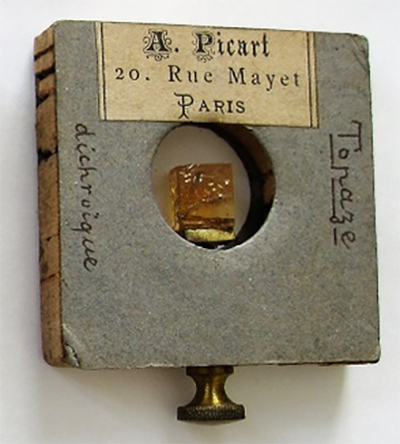
Figure 1. A Picart slide of a tourmaline crystal. It is mounted in a thick square of cork, with paper facings. A brass knob permits rotation of the specimen within the mount. Adapted for nonprofit, educational purposes from an internet sale site.
Alexandre Auguste Picart, 1834 - ca. 1910
by Brian Stevenson
last updated April, 2019
Picart operated an optical business at 20 Rue Mayet, Paris, from about 1875 until after 1907. He produced several varieties of microscopes, but his major focus appears to have been instruments for analyzing chemicals and crystals.

Figure 1.
A Picart slide of a tourmaline crystal. It is mounted in a thick square of cork, with paper facings. A brass knob permits rotation of the specimen within the mount. Adapted for nonprofit, educational purposes from an internet sale site.
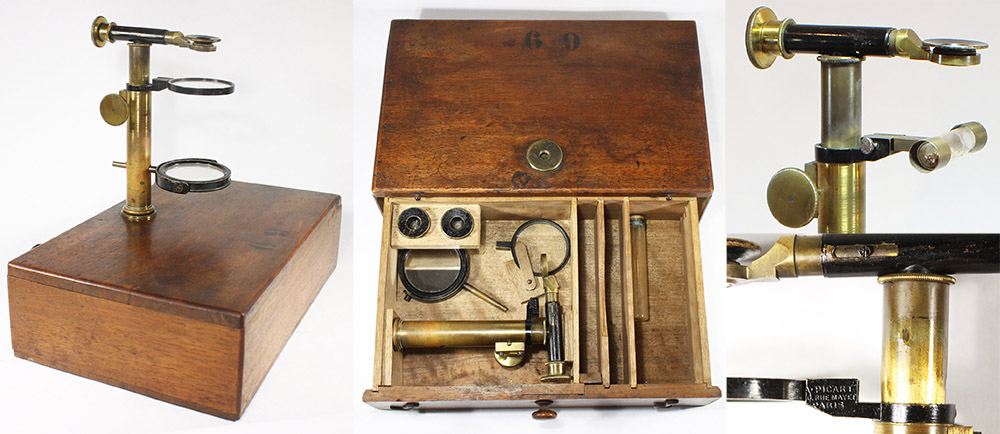
Figure 2.
A Raspail-type microscope by Alexandre Picart. Two doublet lenses of different magnifications can slip onto the arm, which both rotates on a spindle and moves laterally via a screw drive. Some versions included an arm that can hold glass cylinders for observing liquids, which dovetails into the stage mount (upper right image). The instrument packs into a drawer in the base, which also has ample space for specimens, etc. Some images adapted with permission from http://www.microscope-antiques.com/picart.html.
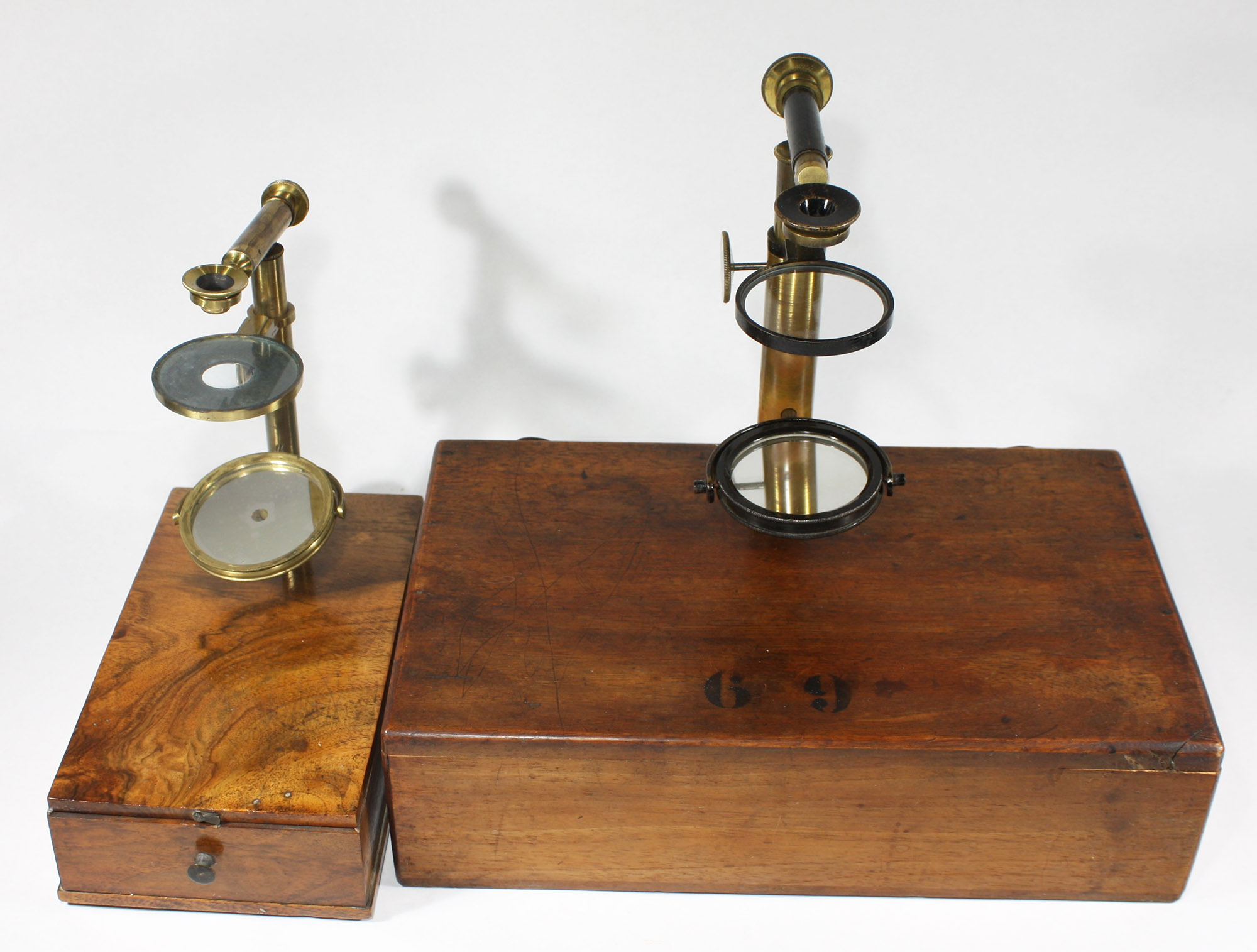
Figure 3.
Picart’s Raspail-type microscopes are considerably larger and more robust than those made by earlier manufacturers such as Louis Joseph Deleuil (1795-1862) (a Deleuil-type is shown to the left). The cabinet of Picart’s microscope measures about 10.5 inches / 27 cm wide. The large size may have been due to their being designed for mineralogists, with the spacious drawer providing ample room for storing geological specimens.
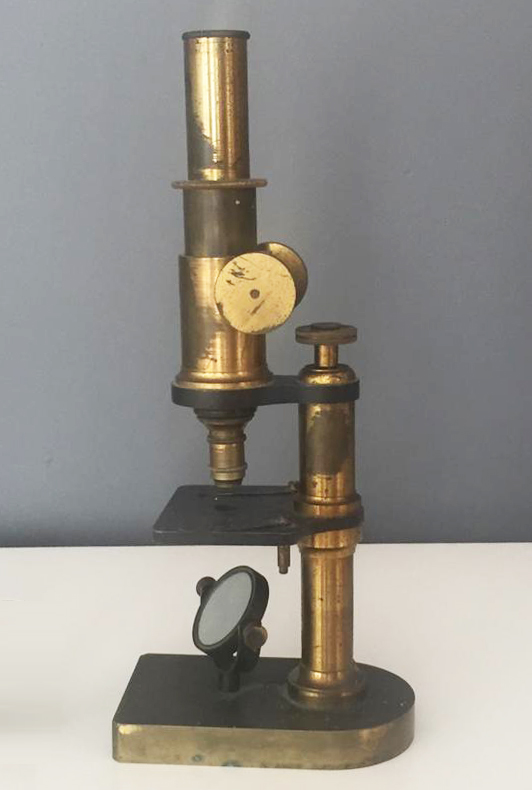
Figure 4.
Two compound microscopes by A. Picart. Adapted for nonprofit, educational purposes from internet auction sites.
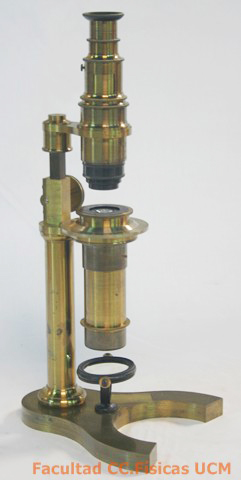
Figure 5.
A polarizing microscope by A. Picart. Adapted for nonprofit, educational purposes from http://museofis.ucm.es/museo/view/cm_view_virtual_object.php?idov=2809&seleccion=1.

Figure 6.
An A. Picart heliostat, a mirrored device that directs light for use with a microscope. Adapted for nonprofit, educational purposes from an internet auction site.
Little is known about Picart’s personal life. His 1891 voter record states that he was born in Paris on June 9, 1834. An Alexandre Picart married in Paris on August 26, 1861, which may have been our microscopist. He later had a partnership with at least one child (“A. Picart et Fils”), during the late 1890s.
Picart first shows up in the 1875 edition of the Paris Annuaire-Almanach, listed as “Picart (A.), instruments d’optique” at 20 Rue Mayet. He was not listed at any location in any previous edition, indicating that he did not own a business prior to 1875. There was not an optician’s shop at 20 Rue Mayet prior to 1875, implying that he did not take over another person’s business. Most likely, he had been a senior workman for one of the Parisian optical firms before striking out on his own.
His 1876 Annuaire-Almanach entry gave detailed information on his wares, “fabr. d’instruments à l’usage des sciences, optique, polarisation, lumière, projection, microscopes, solaires et électriques, lumière oxyhydrique, spectroscopes de tous genres”. He was confident of his products’ quality that he exhibited in the 1876 Special Loan Collection of Scientific Apparatus at the South Kensington Museum, London.
Picart won a Silver Medal at the 1888 Centennial International Exhibition, Melbourne, Australia, for his “instruments for teaching physics in normal schools; spectroscopes, microscopes, etc.”.
His exhibit at the 1889 Universal Exposition in Paris was described (translated), “one of the large glass tables which decorate this part of the hall is occupied by the exhibition of M. Picart. This advocate has been known for a long time, and particularly for the manufacture of mineralogical instruments, petrographic microscopes, polarizers, and goniometers. He also builds spectroscopes, heliostats and other physics instruments, and he displays several models with a number of microscopes. Among these, I notice especially microscopes of various sizes for the study of minerals in convergent or parallel light, according to the Bertrand system, microscopes for the study of thin sections, microscopes polarizers, M. Descloiseaux's system, and finally microscopes for histology or other uses (I find that these instruments have a tube of too small diameter for their length). As for their qualities of construction, I can not say anything, not considering myself as sufficiently competent in mineralogical microscopy. I said, however, that Mr. Picart has the reputation of knowing how to build these special instruments. They appear, moreover, to be solidly and seriously established”. Picart was awarded a Gold and two Silver Medals.
An American visitor reported, “A. Picart, besides an extensive display of optical articles of familiar kinds, exhibited a number of goniometers. Of these, two, one of which was very large, were of the Wollaston type, and provided with collimators on separate stands, which were quite as large as the instruments themselves. It is not easy to see that these would possess any practical qualities which would justify so exaggerated a departure from the limits indicated by theory” (the goniometer shown in Figure 7 is probably an example of that model).
By the 1890s, Picart appears to have focused largely, if not entirely, on mineralogical/chemical apparatus. His 1891 extended entry in the Annuaire-Almanach states, “fabr. optique, polarisation, lumière, projection, spectroscopes en tous genres, microscopes polarisants, goniometre (appareil universel), fabr. de règles à calculer en buis avec et sans curseur”.
The 1896 and 1895 Annuaire-Almanachs give the business name as “Picart (A.) et Fils”, while the 1900 edition listed only “Picart (A.)”. Whether his son died or left the business, or Alexandre died/retired and the “fils” continued alone, is not known. A death record for Alexandre Picart has not been definitively identified. The shop was still in business in 1907.

Figure 7.
Mallard’s modification of the Wollaston-type goniometer, manufactured by A. Picart. This model is probably the one described by a visitor to the 1889 Universal Exposition as, “one of which was very large, … of the Wollaston type, and provided with collimators on separate stands, which were quite as large as the instruments themselves”. Adapted for nonprofit, educational purposes from https://www.polytechnique.edu/patrimoine/pages.php?notice=000000158&collections=instruments.
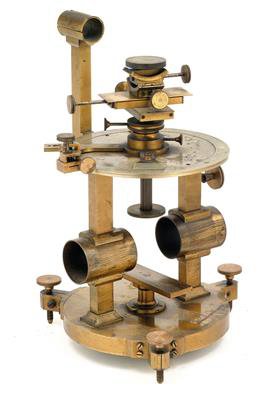
Figure 8.
Goniometer by A. Picart. Adapted for nonprofit, educational purposes from an internet auction site.
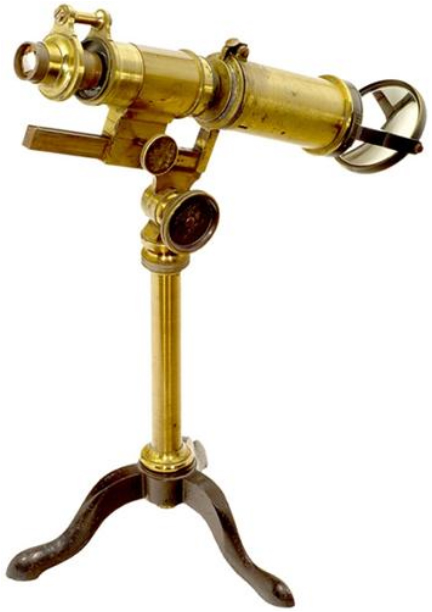
Figure 9.
Polariscope by A. Picart. Adapted for nonprofit, educational purposes from an internet auction site.
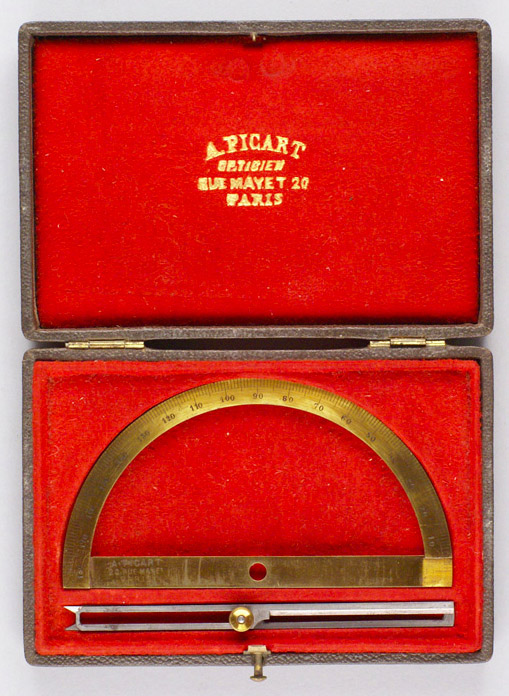
Figure 10.
Contact goniometer by Alexandre Picart. Adapted for nonprofit, educational purposes from http://www.mineralogy.eu/gonio/contact/Picart.html.
Acknowledgement
Thank you to Barry Sobel for sharing images of his Picart case-mounted microscope.
Resources
Annuaire-Almanach du Commerce, de l'Industrie, de la Magistrature et de l'Administration (1870 – 1907), accessed through https://gallica.bnf.fr
Catalogue of the Special Loan Collection of Scientific Apparatus at the South Kensington Museum (1876) page xxxvii
Official Record of the Centennial International Exhibition Melbourne (1888), pages 699 and 926
Pelletan, Jules (1889) La Micrographie a l’Exposition Universelle de 1889, Journal de Micrographie, Vol. 13, page 466
Universal Exposition Paris (1891) U.S. Government Printing Office, Vol. 2, page 231
Voter record of Alexander Auguste Picart (1891) accessed through ancestry.com